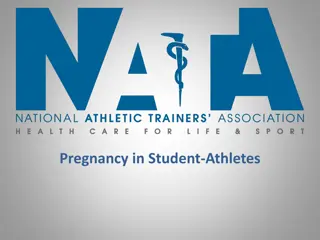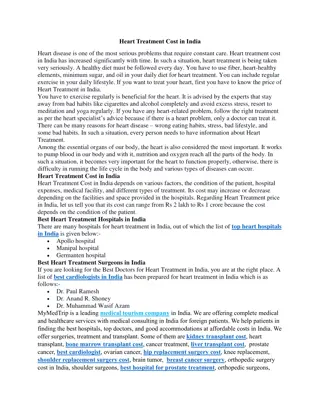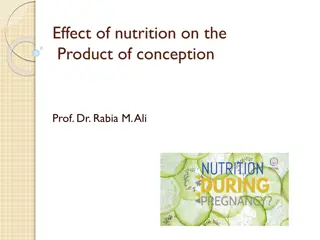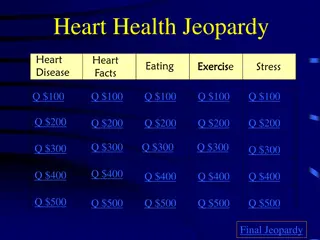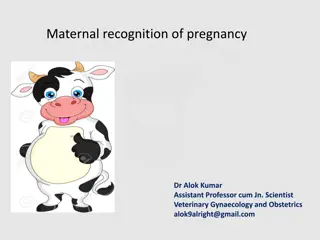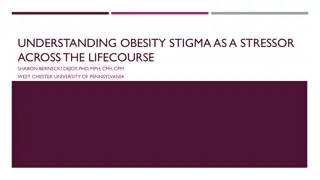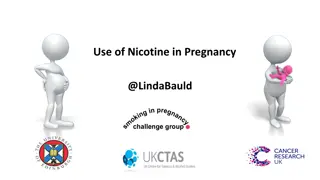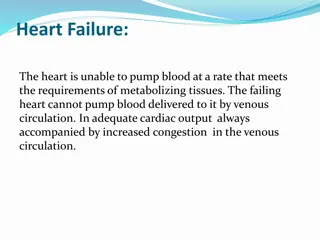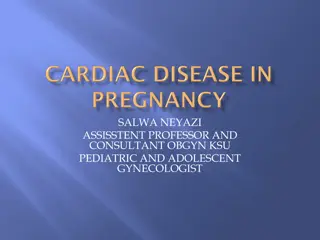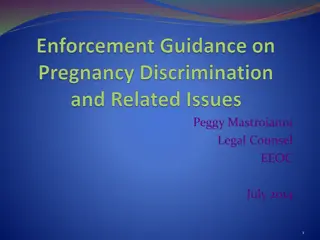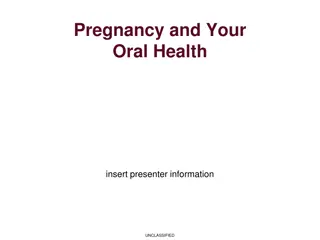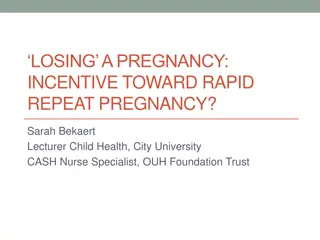
Effects of Pregnancy on Cardiovascular System and Counseling for Women with Heart Disease
Explore the physiological effects of pregnancy on the cardiovascular system, highlighting changes in cardiac output and systemic vascular resistance. Understand the implications for women with heart disease, including risks, counseling options, and antenatal management strategies. Learn about the Toronto risk markers for maternal cardiac events and high-risk cardiac conditions during pregnancy. Stay informed about NYHA classification and how to manage cardiac conditions in pregnant individuals.
Download Presentation

Please find below an Image/Link to download the presentation.
The content on the website is provided AS IS for your information and personal use only. It may not be sold, licensed, or shared on other websites without obtaining consent from the author. If you encounter any issues during the download, it is possible that the publisher has removed the file from their server.
You are allowed to download the files provided on this website for personal or commercial use, subject to the condition that they are used lawfully. All files are the property of their respective owners.
The content on the website is provided AS IS for your information and personal use only. It may not be sold, licensed, or shared on other websites without obtaining consent from the author.
E N D
Presentation Transcript
Physiological effects of pregnancy on CVS : - By 6 8 peripheral vasodilitation occur systemic vascular resistance Cardiac output(CO.) by 20 % . - CO. to about maximum of 40 % by 24 28 wks of gestation . so risk of H. F. in this period . - HR 10 15 % . - CO up to 80%above pre-labourvalues in first few hrs after delivery . - CO. return to normal at 2 wks post delivery .
counselling of women with heart disease Risk of maternal death . Possible reduction of maternal life expectancy . Effects of pregnancy on cardiac disease . Mortality associated with high risk conditions . Risk of fetus developing congenital heart disease . Risk of preterm labourand FGR . Need for frequent hospital attendance and possible admission . Intensive maternal and fetal monitoring during labour . Other options contraception , adoption , surrogacy . Timing of pregnancy .
Antenatal Management a joint obstetric / cardiac History Examination Investigations Follow up maternal &fetal well-being
work heart Association ( NYHA ) classification 1. Mild No limitation of physical activity . Ordinary physical activity does not precipitate fatigue , palpitations , dyspnoea , angina . 2. Mild Slight limitation of physical activity . Comfortable at rest , but ordinary physical activity results in fatigue, palpitation or dyspnoea. 3. Moderate Marked limitation of Physical activity . Comfortable at rest , but less than ordinary activity causes fatigue , palpitation or dyspnoea . 4. Severe Unable to carry out any physical activity without discomfort . Symptoms of cardiac insufficiency at rest . If any physical activity is undertaken , discomfort is increased .
Toronta risk markers for maternal cardiac events Markers 1 Prior episode of heart failure , arrhythmia or stroke . 2 NYHA class > II or cyanosis . 3 Left heart obstruction . 4. Reduced left ventricular function ( EE < 40 per cent ) 0 predictors : risk of cardiac event is 5per cent ; I predictor : risk of cardiac event is 37 per cent ; > 1 predicators : risk of cardiac event is 75 per cent .
High-risk cardiac conditions Systemic ventricular dysfunction ( ejection fraction < 30 per cent , NYHA class III IV ) . Pulmonary hypertension Cyanotic congenital heart disease . Aortic pathology ( dilated aortic root > 4 cm , Marfan syndrome ) . Ischaemic heart disease . Left heart obstructive lesions ( aortic , mitral stenosis ) Prosthetic heart valves ( metal ) . Previous peripartum cardiomyopathy .
Fetal risks of maternal cardiac disease Recurrence ( congenital heart disease ) . Maternal cyanosis ( fetal hypoxia ) . Iatrogenic prematurity . FGR . Effects of maternal drugs ( teratogenesis , growth restriction , fetal loss ) .
Maternal risks: -Endocarditis. -Arrythmias. - Paraxysmal embolic events. -Heart failure &pulmonary hypertention. - Death .
Risk factors for the development of heart failure Respiratory or urinary infections . Anaemia . Obesity . Corticosteroids . Tocolytics . Multiple gestation . Hypertension . Arrhymais . Pain-related stress . Fluid overload TREAT HEART FAILUR AS IN NON PREGNANT ONE
Management of labour and delivery Management of labourin women with heart disease Avoid induction of labourof possiblr . Use prophylactic antibiotic . Ensure fluid balance . Avoid the supine position . Discuss regional / epidural anaesthesia / analgesia with senior anaesthetist . Keep the second stage short . Use syntocinon judiciously .
Specific conditions Ischaemic heart disease Mitral and aortic stenosis Marfansyndrome Pulmonary hypertension : Peripartumcardiomyopathy ( CMP Coarctationof Aorta Prosthetic heart valves
Strategies of anticoagulant regimen in pregnancy: (1.) Continue warfairn during pregnancy. ( or ) (2.) Replace warfarin with high dose heparin from 6th 12thwks of gestation & 10 days before the delivery (3.) use high dose unfractionated or low molecular weight heparin throughout pregnancy.
Which option is chosen will depend on several factors: 1. Type of mechanical valve : the risk of thrombosis is less with the newer bi-leaflet valves than first & 2nd generation ball and cage valves . 2. The position of the value replacement : Mitral position > risk Aortic position 3. number of mechanical valves : Two valves give a high risk of thrombosis . 4. The dose of warfarin required to maintain a therapeutic INR . 5. Any previous history of embolic events .
according to risk of bacterial endocarditis : - High-risk : Prosthetic valves , previous bacterial endocarditis , complex cyanotic congenital heart disease ( fallot's , transposition of great arteries ,surgical systemic / pulmonary shunt ) . acquired valvulardisease . Moderate risk : Hypertrophic cardiomyopathy . Mitral value prolapse with mitral regurge .
Stratification of cardiac conditions according to risk of bacterial endocarditis : Negligible risk : Secundum ASD . Repaired ASD , VSD , PDA . mitral prolapsewith or without regurgitation . Physiological Heart murmurs . Pacemakers . For high & moderate risk : Endocarditis prophylaxis is recommended .


